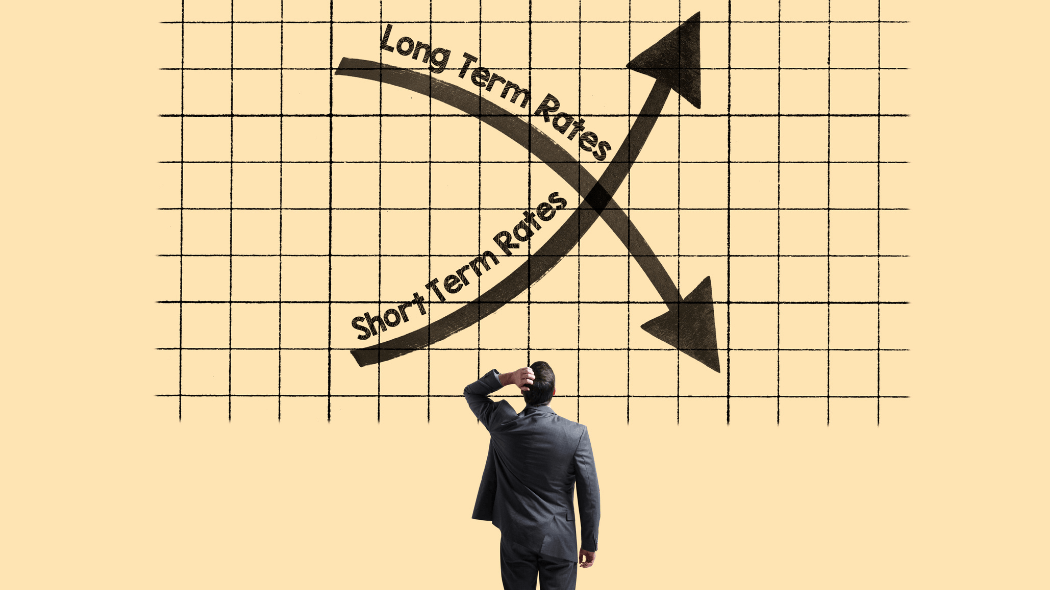
Does an Inverted Yield Curve indicate a recession?
Let’s find out.
As of Nov’22, the yield curve for 3-month and 10-year US treasury has officially inverted. They are expecting to see the recession by Oct’23. In India, the yield curve seems to have flattened, which could go either way.
Usually, long-term bonds offer a superior yield than short-term bonds, making a yield curve an upward slope. But if not, the curve inverts and may indicate the possibility of an economic downgrading.
An inverted yield curve was almost always followed by a recession. Though investors must only treat the yield curve as an indication as the economic scenario may flip. You never know.
Read on to find out more about the Inverted Yield Curve.
As long-term bonds tend to be riskier, investors demand higher yields to compensate for the risk.
In such a case, long-term yields are higher than short-term yields.
The yield curve becomes negative/inverted when the short-term yield surpasses the long-term yield. This also indicates increased demand for long-term bonds.
A flat yield curve indicates that both long and short-term bonds are performing the same. It could be the foreshadowing of a weak economy. A flat curve could be a transition phase between the normal and the inverted yield curve.
The yield curve goes steep when long-term bonds are offering far higher yields than short-term bonds. This indicates the growing economy.
The Yield Curve was able to forecast recession many times in the past. In fact, in the past 50 years, an economic slowdown or a downgrade was seen with the inverted yield curve.
However, it is essential to understand that the yield curve is only an indicator.
Let’s put it simply.
Economic ups and downs could happen due to many reasons. Inflation, sudden geographical tension, a wave of life-threatening viruses, or anything. While some changes are sudden, some can be analyzed by observing economical patterns.
Having said that, the yield curve will invert if the investors are expecting a possible downfall in the economy. With a fall in inflation, investors will analyze and predict a potential fall in the yield as well.
If the yield for the long-term bond keeps falling further, it could lead to a recession.
However, an inverted yield curve isn’t the official parameter to predict a recession. It is merely an indicator.
Many investors closely follow the yield curve to align their investments accordingly. Prices of the bonds may fluctuate as the supply/demand dynamic changes.
Here are a few tips for investors-
With the fear of recession around the corner, many investors start to panic. Some may end up selling without considering the possible risk/loss.
In a situation like this, you must stay calm.
The yield curve doesn’t stay inverted forever. The economy eventually catches up. Most importantly, whenever the yield curve inverts, the recession is not an immediate next step.
Investors get enough time to align their investments, which brings us to our next point.
It is always advisable to have a diverse portfolio to minimize the risk. You can check where your portfolio stands with our complimentary portfolio analysis tool.
An inverted Yield Curve is one of the situations where outcomes could go either way. To prepare yourself, you may want to align and readjust your investments.
You can explore other investment avenues that can balance out the risk and returns.
We would recommend re-evaluating your investment portfolio at regular intervals. It gives you an idea of where your profile stands in a changing economy.
There are many investment opportunities that can help you sustain your financial goals.
Many investors closely watch the yield curve to adjust their investments amid the possibility of a recession.
However, if the yield curve doesn’t stay inverted for a prolonged time, the economy may not lead to a recession.
Frequently changing yield curves may shed light on a weak economy, but not necessarily a recession.
We would recommend following the above tips to stay calm and focus on your investment goals. Take actions that will suit your profile.
You may also like to read- different types of mutual funds.

